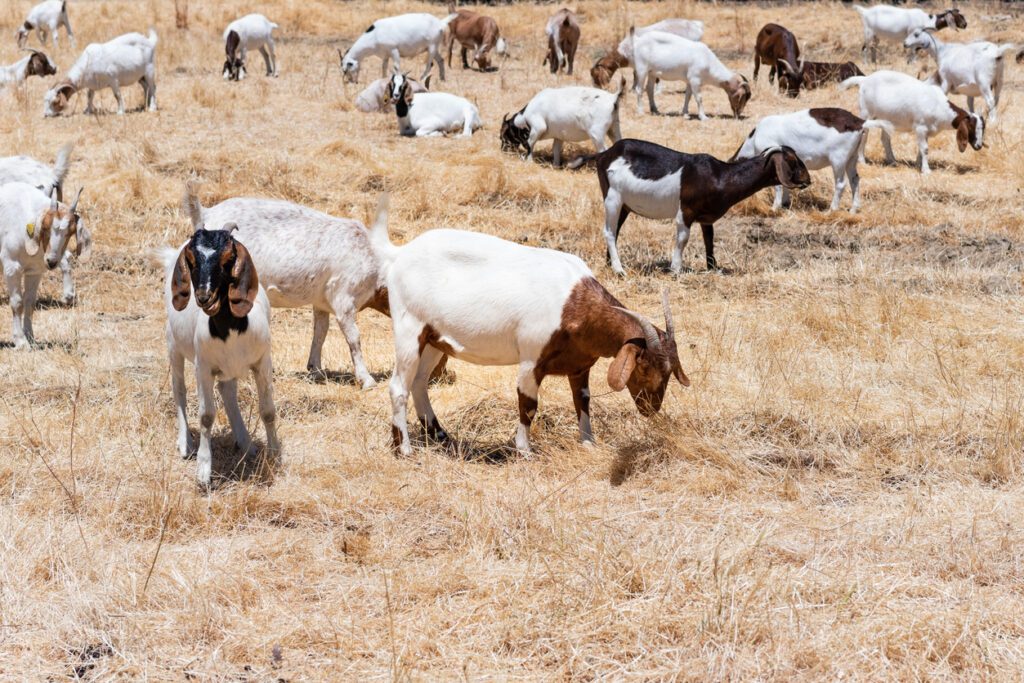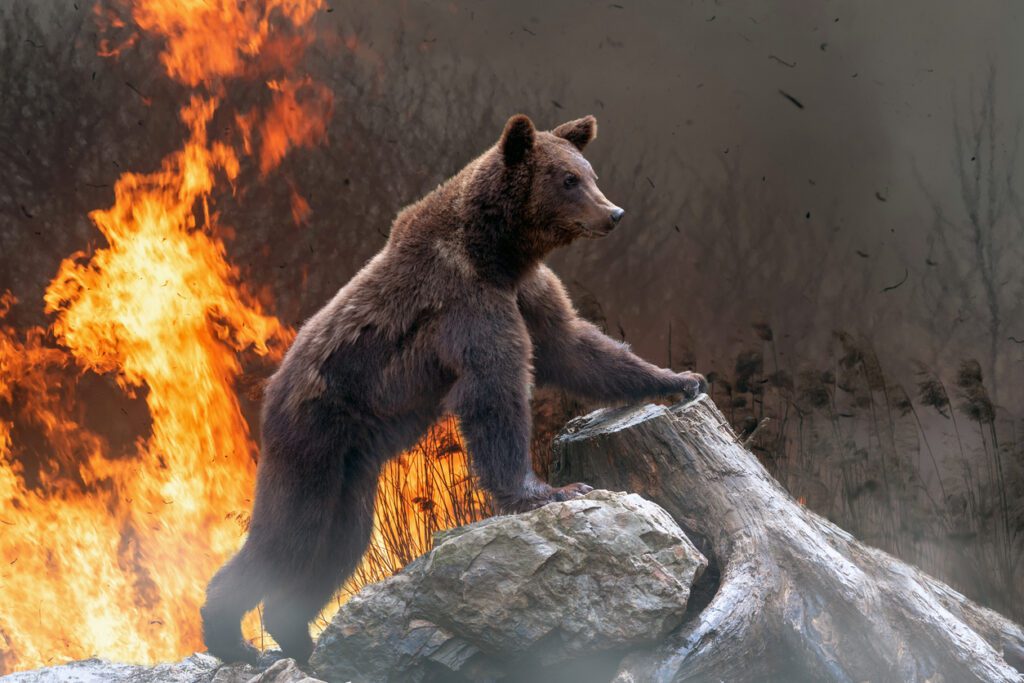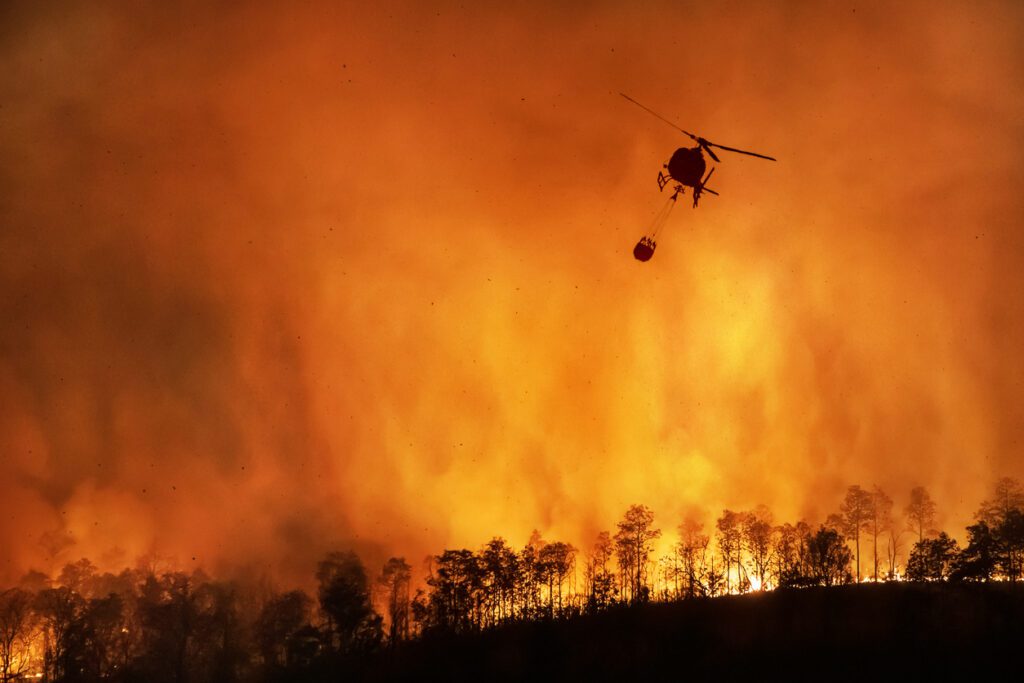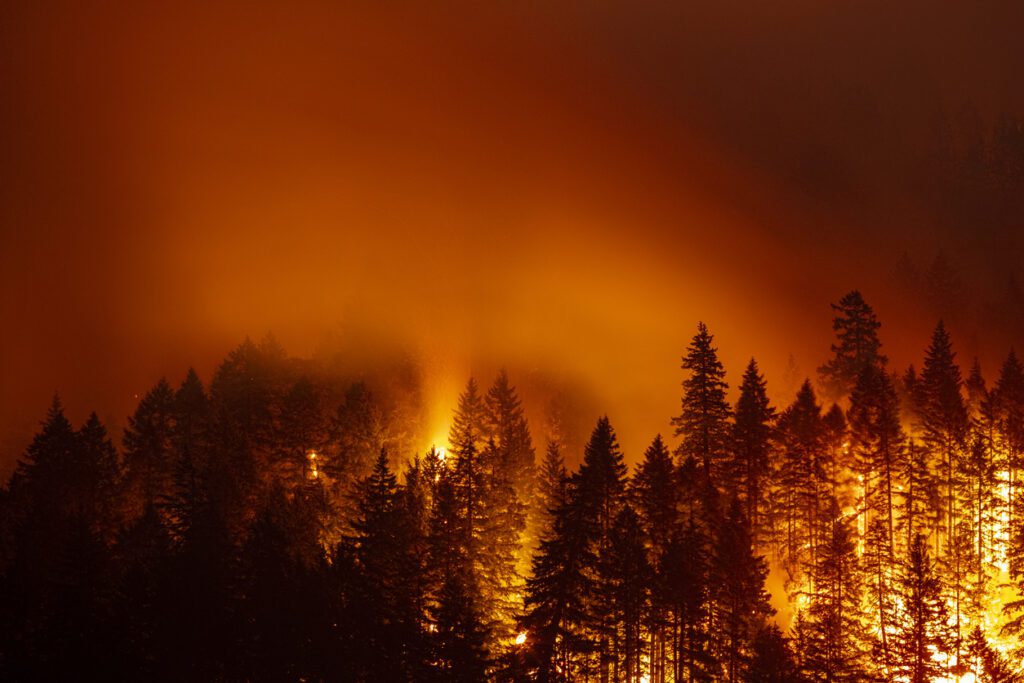The California Fires are difficult for me to write about; I started writing about this topic during the Caldor Fire this year. Since then, I have started over several times because I did not feel that I was not doing the subject justice. At this time, it would be better if I cited knowledgeable authorities and included links for you rather than trying to explain the tragedy. There has been much written on the human tragedy and resources to assist if desired. So I am going to focus on other areas.
Notes on Photos:
- Featured Image by Landon Parenteau on Unsplash
- The photos of the fires, firefighters, fire fighting equipment, and goats were obtained from Unsplash.com and iStock.com.
- I drew the depiction of my Operation Rescue.
My family and I are lifelong residents of California, and while large areas of California are considered arid, there are vast lush forests in Northern California and the Sierras. Unfortunately, California has been facing more extreme drought and wildfire conditions. Global Warming and our attempts to suppress naturally occurring wildfires for more than a century have contributed to the problem.
As California residents, we worry about where and when the next fires will occur and work to prevent them. There are many different strategies, I’ll just list a couple.
One strategy is to develop a “Defensible Space” instead of the traditionally lush garden. The goal is to have a specially designed area around your home that serves as a barrier to impede raging wildfires and provides maneuvering space for firefighters. Unfortunately, not every homeowner has acreage, and this strategy is not possible in most suburbs, where developers build homes close to one another to maximize the available land and dollars. In Tracy, we are fortunate that our lot is next door to an almond orchard, which would provide more access if needed. We have also replaced the highly flammable decorative mulch with flame-resistant rocks.
Another strategy is to deploy herds of goats or cattle to eat the dry grass on individual properties and/or open hillsides.

Arnold is located in the Sierras where pine needles cover the ground normally at different times of the year, which is an extremely high risk for fire. We are required to manually clean up the pine needles on our property once a year and sometimes we do the manual clean-up twice a year. Deploying goats is not an option.
As the Caldor fire raged out of control, I watched the fire’s edge creep closer and closer to Arnold on the CALfire maps. I worried! I don’t want to lose our property, and I worried about the other people who live in the path of the fire. However, the people have a communication network, so they know what’s coming and can plan to protect themselves. They know how to escape, they may not choose to do so, but they have a choice. My thoughts focused on the wildlife. What do the animals do? What can they do? As the Caldor fire approached South Lake Tahoe and necessitated evacuations, I watched news reports of bears just strolling down the empty streets of Tahoe as if nothing was wrong. I wanted to scream, “Run!”
If only I could load the animals in the back of my truck and drive them to safety.
“News flash: Operation Rescue is on the move. The founder of Operation Rescue is driving a truck with a golden retriever in the passenger seat and several black bears, a deer family, and a family of gray foxes in the truck bed. The mission of Operation Rescue is to relocate everyone, people and animals, safely from the fire.”

Unfortunately, my fantasy of Operation Rescue is not possible at this time, and not a reasonable way to try to save the animals.
So what do animals do when faced with massive wildfires? Can they survive? Is there any way I could actually help?

I began searching for information on the Internet. I found several articles written on this topic.
The first article that I am going to reference is, What Do Wild Animals Do In Wildfires? September 7, 2020.
https://www.nationalgeographic.com/environment/article/150914-animals-wildlife-wildfires-nation-california-science

The article states that it’s unclear how many animals have died in fires—such data is not tracked consistently across regions.
“Fire seasons are growing longer, and fires are burning hotter, spread faster, and lasting longer. Since the early 1970s, the wildfire season in the western U.S. has grown from about five to more than seven months. In addition, as climate change drives up temperatures and worsens drought conditions, landscapes are becoming increasingly dry and more susceptible to burning.”
https://www.nationalgeographic.com/environment/article/150914-animals-wildlife-wildfires-nation-california-science

“Forest animals typically have some ability to escape the heat. For example, birds fly away, mammals run, and amphibians and other small creatures burrow into the ground, hide in logs, or take cover under rocks. And other animals, including large ones like elk, will take refuge in streams and lakes.”
https://www.nationalgeographic.com/environment/article/150914-animals-wildlife-wildfires-nation-california-science
I searched for further information specifically concerning my Black Bears, and I found the following information on the Backpacker website:
“Wildfires are not a new phenomenon to wildlife. Bears, cougars, and other creatures have dealt with blazes as long as those species have existed. With that in mind, it shouldn’t come as a surprise that bears have pretty good instincts when it comes to evading the flames, even with the growing intensity and frequency of modern blazes.
Should a wildfire begin burning in a bear’s home range, it will usually walk or run out of the path of the flames. However, when possible, they often stay close by.”
“There are few places in the United States where this regrowth happens faster than the Pacific Northwest, thanks to lots of moisture in the air. Richard Beausoleil, a bear and cougar specialist with the Washington Department of Fish and Wildlife, said bears’ wide range of diet helps them adapt after a fire. In addition to plants, they’ll also go for insects, carcasses and sometimes small mammals.”
What Wildfires Mean for Bears
Note: The last statement applies more to Oregon and Washington rather than California.

So is there anything anyone can do to help? I found the following suggestions in an article, Young wild animals don’t need to be ‘rescued’ in a wildfire.
Published in the Sacramento Bee, by Maddie Capron
July 22, 2021 7:58 AM.
https://www.sacbee.com/news/nation-world/national/article252948178.html
“Well-meaning people are concerned about the wildlife living in areas affected by the fires, and some think it’s good to leave out food or water for the animals to find while their habitat burns. That’s not the best idea, wildlife officials said. “It could attract animals to your yard and create more problems — spreading disease, attracting predators, and making wildlife aggressive by getting them accustomed to being fed by people,” fire officials said.
“In many cases, wild animals will look for a new suitable habitat after a fire burns through the area. Some species return to burned areas and take advantage of the new growth found there. “Not all wildlife perish when a fire moves through an area,” fire officials said. “While fire can reduce important habitat and food sources, it can also create new habitat and opportunities for some species.” Here’s how you can help wildlife during a wildfire without removing them from their habitat or luring them with food, according to animal experts:
- Prevent forest fires in the area by following safe practices.
- Don’t feed the animals because it can make them dependent on humans.
- Don’t scare animals away.
- Allow them to rest.
- Keep pets on a leash or inside your home to avoid conflicts.
- Report any sightings of injured wildlife to local animal control officials.
- Allow fleeing animals to pass through the area.
If you have recommendations for organizations that help in situations like this please let me know and I will share the contact information. If you have thoughts you’d like to share on this topic let me know.
Thank you!

